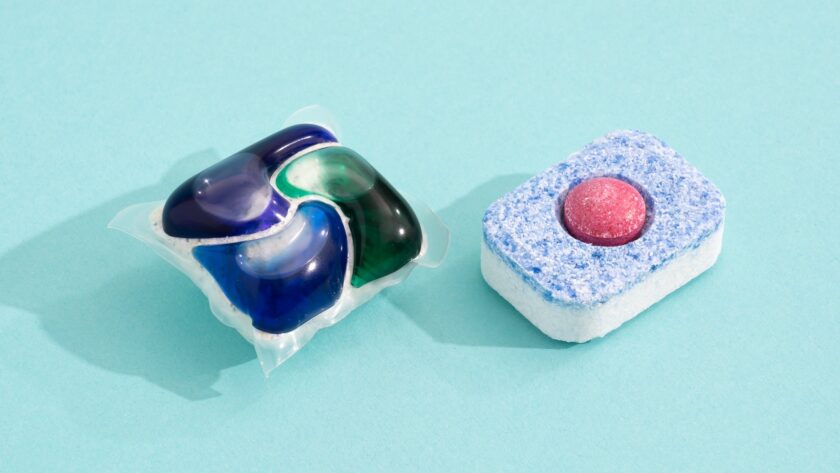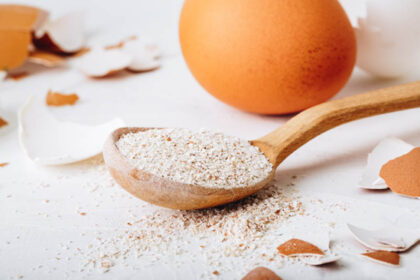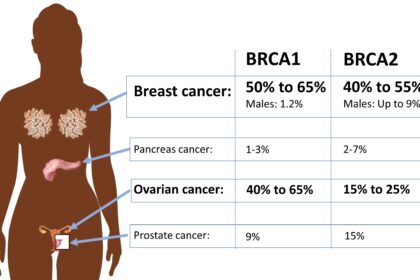In the era of convenience, dishwasher detergent pods have become a staple in households across the globe. Offering a quick and mess-free solution to dishwashing, these pods have gained popularity for their simplicity and effectiveness. However, recent studies have raised alarming concerns about the potential health and environmental risks associated with these seemingly innocuous cleaning agents.
Beyond their efficient cleaning capabilities, dishwasher detergent pods have been shown to pose threats to our health, specifically targeting the throat and digestive system. Additionally, the environmental impact extends beyond our homes, with the release of micro-plastics into water sources, contributing to the global plastic pollution crisis. In the wake of these revelations, it’s crucial for consumers to be informed about the potential dangers lurking in their dishwashers and explore alternative, safer options.
But fear not – there’s a solution that allows you to maintain a clean kitchen without compromising your well-being or the environment. In this article, we’ll delve into the concerning findings regarding dishwasher detergent pods, shedding light on the risks they pose. Moreover, we’ll empower you with the knowledge to take control of your cleaning routine by providing a simple DIY recipe using five readily available ingredients, ensuring a safer and more sustainable approach to dishwashing. Join us as we navigate through the hidden hazards and unveil the path to a healthier, eco-friendly dishwashing experience.
The Perils Within the Pods: Unmasking Harmful Ingredients
Dishwasher detergent pods, touted for their convenience, often harbor a cocktail of chemicals that, when unleashed, can wreak havoc on our health. Common ingredients found in these pods include chlorine bleach, phosphates, fragrance chemicals, and a host of other synthetic compounds. Let’s unravel the potential health risks associated with these components.
- Chlorine Bleach:
- Issue: While chlorine bleach is an effective disinfectant, its fumes can be harmful when released into the air. When inhaled, it can irritate the respiratory system, causing throat discomfort and breathing difficulties.
- Health Problems: Prolonged exposure to chlorine bleach has been linked to respiratory issues, including asthma exacerbation and the development of chronic respiratory conditions.
- Phosphates:
- Issue: Phosphates, commonly added to enhance cleaning efficiency, have a darker side. When these compounds find their way into water bodies, they contribute to nutrient pollution, leading to harmful algal blooms and disrupting aquatic ecosystems.
- Health Problems: In water, excessive phosphates can lead to the growth of harmful bacteria, posing a risk to human health when contaminated water is consumed.
- Fragrance Chemicals:
- Issue: Manufacturers often include fragrance chemicals to impart a pleasant scent to the dishwasher detergent. However, these chemicals can be irritating to the respiratory system and may trigger allergic reactions in some individuals.
- Health Problems: Allergic reactions, headaches, and respiratory issues are common side effects associated with exposure to synthetic fragrance chemicals.
- Synthetic Surfactants:
- Issue: Surfactants are responsible for breaking down grease and food particles. However, certain synthetic surfactants can be harsh on the digestive system when residue remains on dishes.
- Health Problems: Ingesting dishes with lingering synthetic surfactants may lead to stomach discomfort, nausea, and, in extreme cases, digestive issues.
- Polyvinyl Alcohol (PVA) Film:
- Issue: The water-soluble film encapsulating dishwasher pods can sometimes fail to dissolve completely, leaving remnants on dishes or releasing micro-plastics into the water supply.
- Health Problems: Micro-plastics, when ingested, can accumulate in the body over time, potentially causing inflammation, hormonal disruption, and other long-term health issues.
As we uncover these potential health hazards associated with common dishwasher detergent pod ingredients, it becomes evident that the convenience of these products comes at a cost. Now, let’s explore a safer alternative – a DIY dishwasher detergent that puts your health and the environment first.
Crafting a Healthier, Greener Solution: DIY Dishwasher Detergent Pods
Now that we’ve unraveled the potential pitfalls of commercial dishwasher detergent pods, it’s time to explore a safer, eco-friendly alternative that puts you in control of what goes into your cleaning routine. Making your own dishwasher detergent pods not only eliminates the risks associated with harmful chemicals but also offers a range of benefits for your health and the environment.
Benefits of DIY Dishwasher Detergent Pods:
- Chemical Transparency:
- By creating your own dishwasher pods, you have complete control over the ingredients. This transparency ensures that no harmful chemicals or questionable additives make their way into your dishwashing routine.
- Reduced Environmental Impact:
- The DIY recipe eliminates the need for single-use plastic pods and minimizes the release of micro-plastics into water sources. This eco-friendly approach contributes to a healthier planet by reducing plastic pollution.
- Cost-Effective:
- Homemade dishwasher pods are often more cost-effective than their commercial counterparts. The simple ingredients in this recipe are readily available, making it a budget-friendly option for those looking to save on cleaning supplies.
- Customization:
- Tailor the scent of your dishwasher pods by experimenting with different essential oils. The recipe provided features lemon and grapefruit essential oils, imparting a refreshing fragrance to your dishes.
DIY Dishwasher Detergent Pod Recipe:

Ingredients:
- 1 cup super washing soda
- 1 cup baking soda
- 1 cup table salt
- 1 teaspoon natural dish soap
- 10 drops each lemon essential oil and grapefruit essential oil
- ¼ cup white vinegar
- Ice cube tray or silicone mold
Instructions:
- Mixing the Ingredients:
- In a small bowl, combine super washing soda, baking soda, table salt, dish soap, lemon essential oil, and grapefruit essential oil. Whisk the mixture until well combined.
- Adding Vinegar:
- Slowly incorporate white vinegar into the mixture, adding it in small amounts. Stir until the mixture reaches the consistency of wet sand and naturally starts to clump. Adjust with more vinegar or baking soda if needed.
- Filling the Tray:
- Spoon the mixture into an ice cube tray or silicone mold, pressing down firmly in each cavity.
- Drying Process:
- Place the tray in a dry, sunny spot and let the dishwasher tablets dry for at least 24 hours. Ensure they easily remove from the tray and stay in one piece.
- Storage:
- Transfer the dried pods to a lidded glass jar and store them away from moisture. Since they don’t contain water, these pods should last indefinitely. Dispose of any pods showing signs of mold or mildew.
- Usage:
- To use, place 1-2 dishwasher pods in the detergent compartment and run your dishwasher as usual.
Embark on this journey towards a healthier, greener dishwashing routine by taking control of the ingredients that touch your dishes. With these DIY dishwasher detergent pods, you not only safeguard your well-being but also contribute to a cleaner, more sustainable future.
Embracing a Cleaner, Healthier Dishwashing Routine
As we bid farewell to the era of blindly trusting commercial dishwasher detergent pods, the journey towards a cleaner, healthier dishwashing routine beckons. The revelations about the potential health and environmental risks associated with store-bought pods highlight the need for a safer alternative. Fortunately, the solution lies in the simplicity of your kitchen pantry and a DIY approach that not only shields you from harmful chemicals but also champions sustainability.
By opting for homemade dishwasher detergent pods, you reclaim control over the ingredients that touch your dishes and, consequently, your life. The benefits are manifold: transparency in the chemical composition, a reduced environmental footprint by sidestepping single-use plastics, cost-effectiveness, and the joy of customization with delightful scents.
The provided recipe, a harmonious blend of super washing soda, baking soda, table salt, essential oils, and vinegar, empowers you to create pods that not only clean efficiently but also contribute to a greener planet. The drying process transforms these simple ingredients into powerful, eco-friendly pods ready to tackle your dirty dishes.
As you embark on this journey of DIY dishwashing, remember that the power to make a positive impact on your health and the environment is in your hands. The transition may seem small, but collectively, our choices ripple into meaningful change. So, bid farewell to the era of compromise and welcome the dawn of a cleaner, healthier, and more sustainable dishwashing routine. Your dishes, your health, and the planet will thank you for it.





